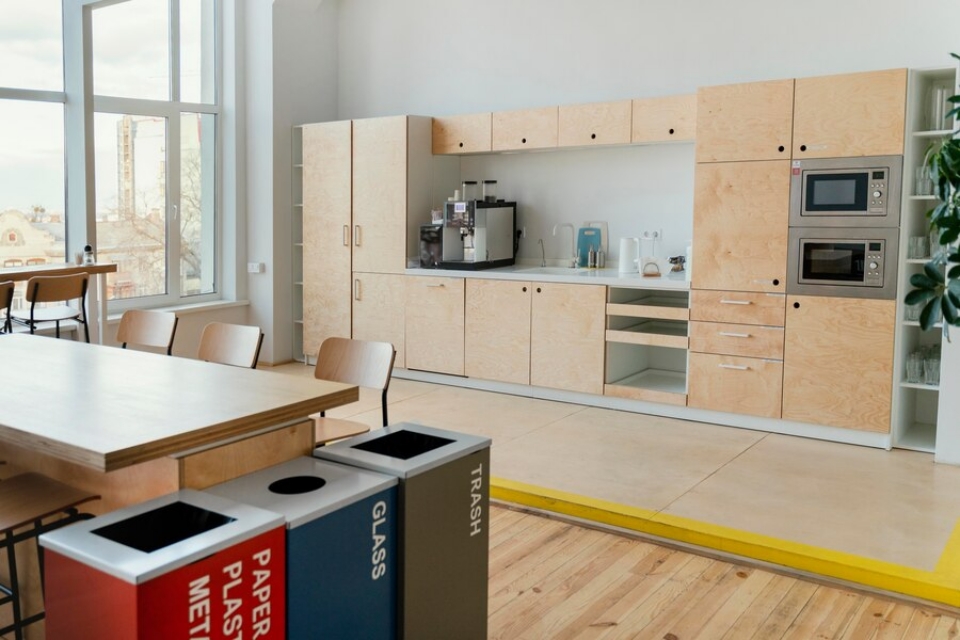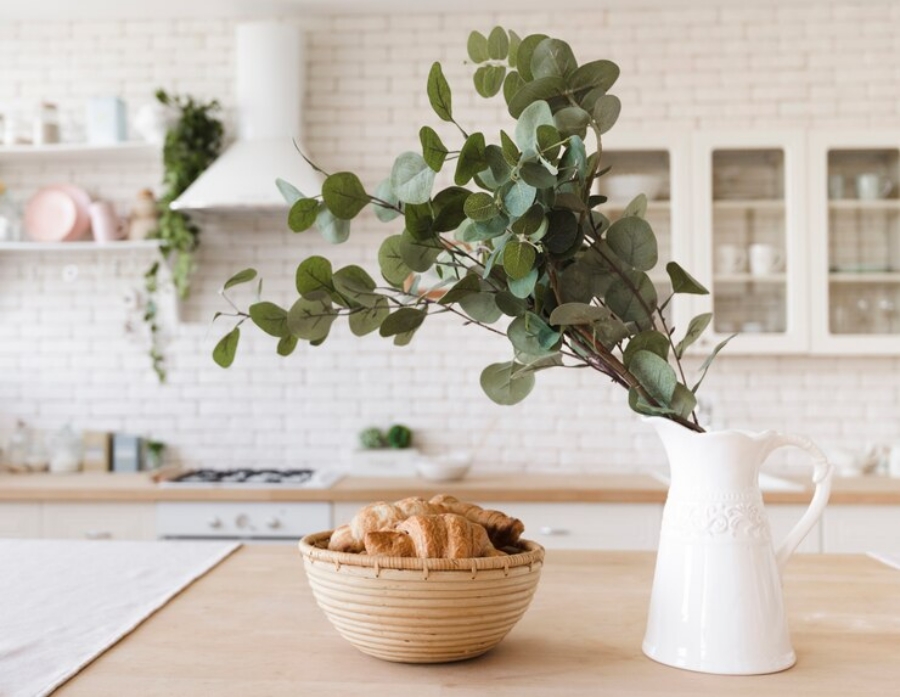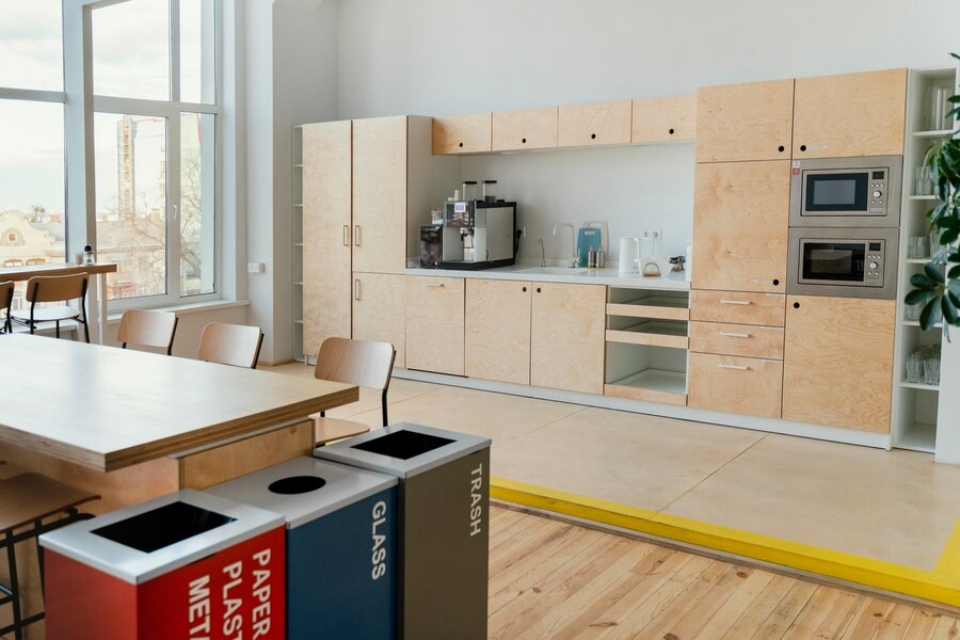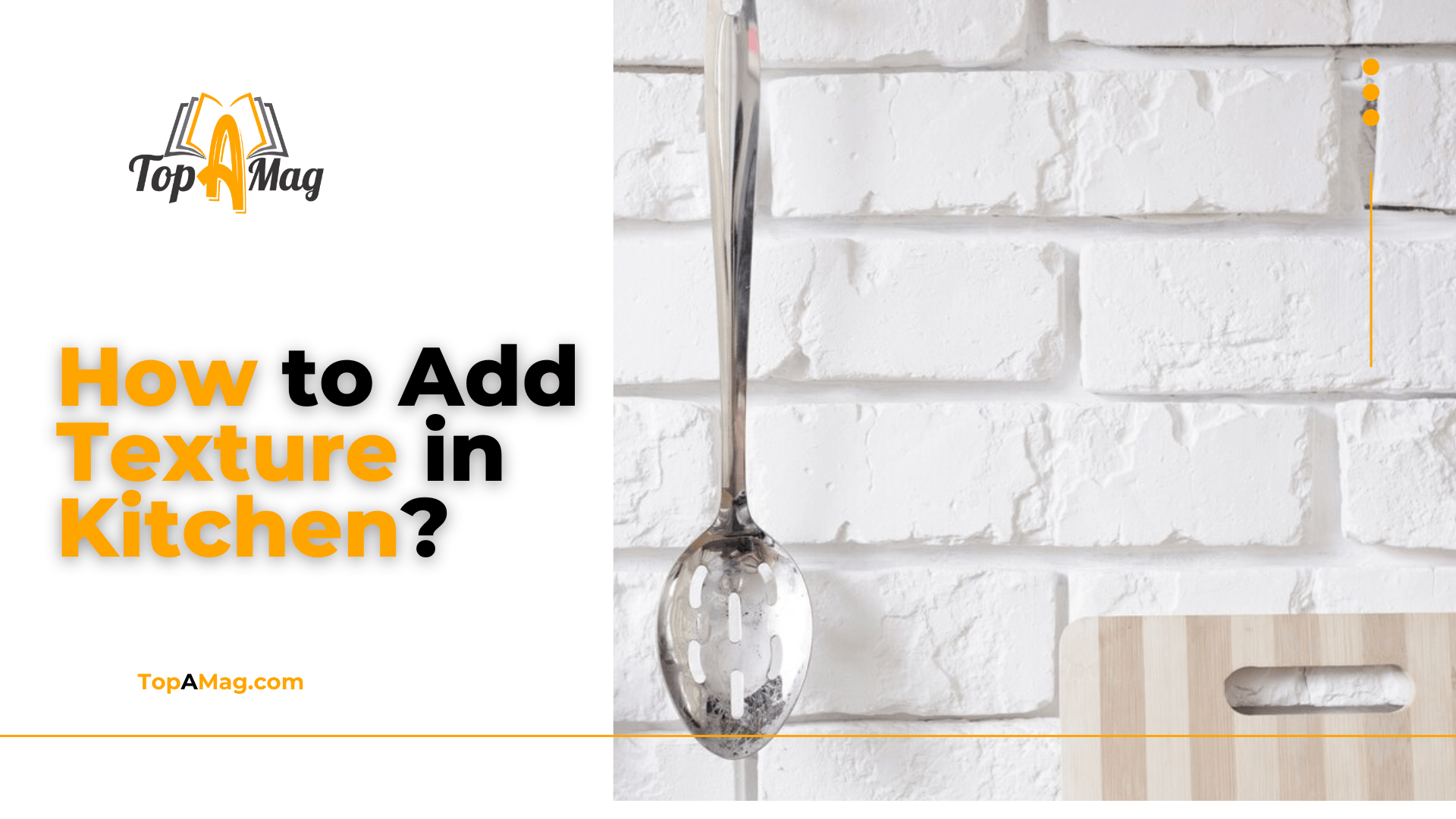Adding texture to your kitchen can transform it from a sterile space to a warm, inviting area where everyone wants to gather. Textures add depth, interest, and a sense of style that can make your kitchen truly unique. In this article, by The Top A Mag team, we’ll explore various ways to incorporate texture into your kitchen, ensuring it becomes the heart of your home.
Key Takeaways
- Texture is essential in creating a visually appealing kitchen by adding depth and warmth.
- Materials like natural stone, wood, and metal can significantly enhance the textural elements of your kitchen.
- Textured backsplashes, cabinetry, and countertops are effective ways to introduce various textures.
- Incorporate textiles and plants for added softness and a touch of nature.
- Regular maintenance is crucial for preserving the beauty and functionality of textured elements.
Why Texture Matters in Kitchen Design?
Texture plays a crucial role in interior design, especially in the kitchen. It helps to create a balanced and visually appealing space. Without texture, a kitchen can feel flat and uninteresting. By incorporating different materials and finishes, you can add layers of depth and dimension. Whether you opt for rustic wood, sleek metal, or soft fabrics, each element brings its own unique texture, enhancing the overall aesthetic.
Choosing the Right Materials
Selecting the right materials is the first step in adding texture to your kitchen. Natural stones like granite or marble can add a luxurious feel, while wooden elements bring warmth and a touch of nature. Don’t forget about metal finishes, which can introduce a modern and industrial vibe. Mixing these materials thoughtfully will create a harmonious blend of textures.
Textured Backsplashes
One of the easiest ways to add texture to your kitchen is through the backsplash. Subway tiles with beveled edges, mosaic tiles, or even textured glass tiles can make a significant impact. A herringbone pattern or a chevron design can add visual interest and a unique texture to your kitchen walls.
Cabinetry and Hardware
Cabinetry is another area where you can introduce texture. Consider shaker-style cabinets for a classic look, or go for reclaimed wood cabinets for a more rustic appeal. Additionally, the hardware you choose can also add texture. Brushed nickel, antique brass, or matte black finishes on handles and knobs can provide a tactile contrast to the smooth surfaces of the cabinets.

Countertop Choices
Countertops are a significant element in any kitchen, and their texture can vary greatly. Polished granite or quartz offers a sleek, smooth surface, while concrete or butcher block countertops add a more rugged and natural texture. Consider mixing different countertop materials to create a dynamic and texturally rich environment.
Flooring Options
The kitchen floor is another excellent opportunity to add texture. Hardwood flooring are undying and adds warmth, at the same time as ceramic tiles may be chosen in a variety of patterns and textures. For a more unique touch, consider cork flooring, which adds a soft, cushioned texture underfoot.
Incorporating Textiles
Textiles are often overlooked in kitchen design, but they can add significant texture. Area rugs, curtains, and upholstered seating can all introduce softness and warmth. Choose natural fibers like cotton, wool, or linen to add a cozy and inviting feel.
Using Plants for Texture
Plants are a wonderful way to add both texture and life to your kitchen. Potted herbs, hanging plants, or even a small indoor garden can introduce a variety of textures and colors. Not only do plants add visual interest, but they also improve air quality and bring a sense of calm.

Lighting with Texture
Lighting fixtures can also contribute to the textural appeal of your kitchen. Woven pendant lights, industrial-style fixtures, or chandeliers with intricate designs can add both texture and personality. The shadows solid by the furniture can create a dynamic interaction of light and texture.
Decorative Accessories
Finally, don’t forget the small details. Ceramic dishes, wooden bowls, textured vases, and woven baskets can all add layers of texture to your kitchen. These accessories are not only functional but also enhance the overall aesthetic.

Adding Texture with an Exhaust System
An often-overlooked element that can add both functionality and texture to your kitchen is the exhaust system. Modern exhaust hoods come in a variety of styles and finishes, such as stainless steel, brushed copper, or matte black, each contributing a different texture to your kitchen design.
Beyond their practical use in removing smoke and odors, these systems can be a focal point, enhancing the overall aesthetic. Opt for a sleek, contemporary design for a minimalist look or a more ornate model to add a touch of sophistication. Integrating a well-designed exhaust system not only improves air quality but also adds a unique textural element that complements your kitchen’s style.
Combining Different Textures
When combining different textures, balance is key. Too much of one texture can be overwhelming, but at the same time as too little could make the gap feel flat. Aim for a mix of smooth, rough, shiny, and matte finishes. For instance, pair an easy marble countertop with a rough brick backsplash, or a glossy tile with a matte wooden ground.
Seasonal Textural Changes
Consider changing up the textures in your kitchen with the seasons. In winter, add chunky knit throws or velvet cushions for warmth. In summer, swap them out for light linen or cotton accessories. This not only keeps your kitchen feeling fresh but also allows you to experiment with different textures throughout the year.
Personalizing Your Kitchen
Adding texture is also a great way to personalize your kitchen. Display handmade pottery, vintage finds, or family heirlooms to add a unique touch. These items not only bring texture but also tell a story and make your kitchen truly yours.
Maintaining Textured Elements
While adding texture can greatly enhance your kitchen, it’s important to maintain these elements. Different materials require different care. Wood surfaces may need regular oiling, stone countertops might need sealing, and textiles will require cleaning. Proper upkeep guarantees that your textured kitchen stays lovely and purposeful.
Future Trends in Textured Kitchens
As design trends evolve, new textures and materials will continue to emerge. Sustainable materials like bamboo and recycled glass are becoming increasingly popular. Keep an eye on design magazines and websites to stay updated on the latest trends and incorporate them into your kitchen.
Frequently Asked Questions (FAQs)
What are the best materials to add texture to a kitchen?
The best materials for adding texture include natural stone like granite or marble, wooden elements for warmth, and metal finishes for a modern touch. Combining these materials thoughtfully can create a dynamic and visually interesting kitchen.
How can I use a backsplash to add texture to my kitchen?
To add texture with a backsplash, consider using subway tiles with a beveled edge, mosaic tiles, or textured glass tiles. Patterns like herringbone or chevron can also enhance the textural appeal of your kitchen walls.
What types of textiles work well in the kitchen?
Area rugs, curtains, and upholstered seating can all add texture to your kitchen. Opt for natural fibers such as cotton, wool, or linen to introduce softness and warmth.
How can I maintain the textured elements in my kitchen?
Maintaining textured elements requires regular care. Wood surfaces may need periodic oiling, stone countertops should be sealed, and textiles will need cleaning. Proper maintenance helps keep your kitchen looking beautiful and functional.
What are some upcoming trends in kitchen textures?
Future trends include the use of sustainable materials like bamboo and recycled glass. Keeping up with design magazines and websites will help you stay informed about the latest trends and incorporate them into your kitchen design.
Conclusion
Adding texture to your kitchen is a fantastic way to create a space that is both functional and beautiful. By carefully selecting materials, incorporating textiles, and paying attention to the details, you can transform your kitchen into a warm, inviting, and visually stunning area. Remember, the key is to balance different textures to create a harmonious and cohesive look. Happy decorating!

